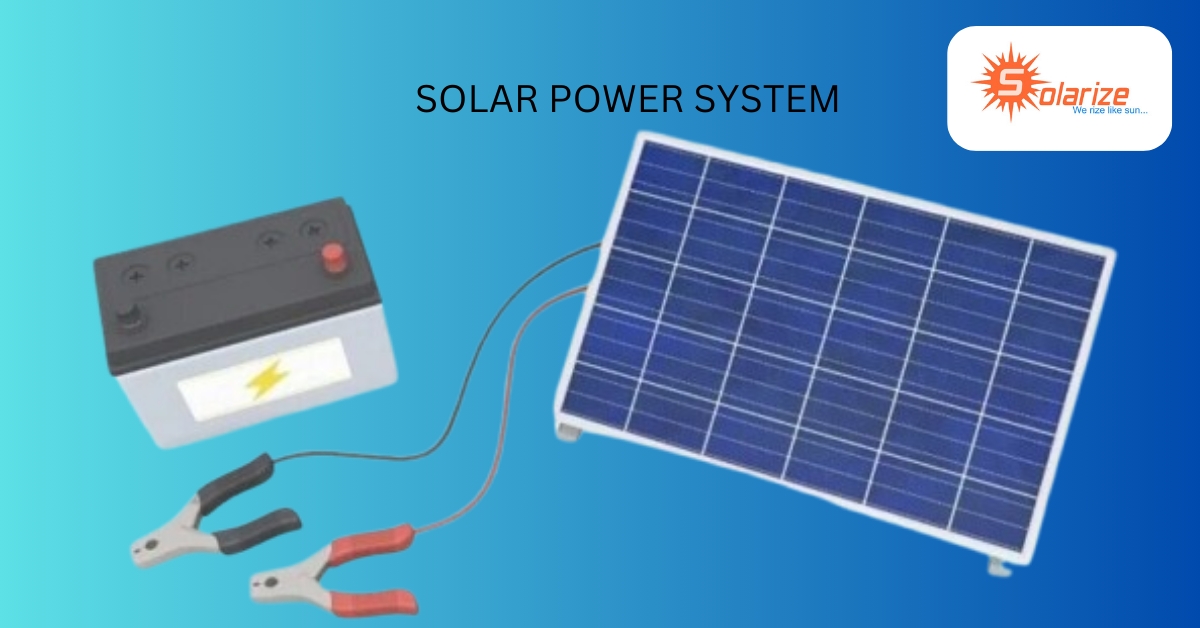
In recent times, solar energy has emerged as a highly feasible and sustainable energy source. When thinking about installing solar panels for homes or businesses, it’s important to know what kinds of systems are available. Every kind of solar system has its own special qualities, advantages, and ideal applications. The three primary categories of solar systems, their technologies, and benefits will all be discussed in this article.
1. Different Types of Solar Systems
A. Solar System on the Grid
The most popular type of solar system is on-grid, also referred to as grid-tied or grid-connected. Users can feed extra electricity back into the grid and obtain credits by connecting these systems to the local utility grid. The system uses energy from the grid when the solar panels aren’t producing enough, as at night.
Ideal for: Cities with dependable grid connections.
The ability to reduce electricity costs by selling extra power to the grid is a major advantage.
B. off Grid Solar System
Off-grid solar power systems run apart from the power grid. Usually, they employ battery storage to store extra energy for later use, guaranteeing a constant power source even in isolated areas. These systems are critical in places where grid access is either nonexistent or erratic.
Ideal for: Places that are isolated or don’t have grid connectivity.
The main advantage is total energy independence, which is helpful for off-grid living or locations with frequent outages.
C. Hybrid Solar System
In a hybrid solar system, battery storage is used in conjunction with on-grid and off-grid components, all while maintaining grid connectivity to the utility company. With this configuration, consumers have more flexibility as they can store extra energy for usage when needed and still draw from the grid during prolonged times of low sun.
Ideal for: Those looking to maintain grid connectivity while achieving energy independence.
Key benefit: Offers backup during power interruptions and improves energy use.
2. Technologies Behind Solar Power Solutions
To understand the types of solar systems fully, it’s essential to consider the technology involved. Here are the two main technologies used:
A. Systems of Photovoltaic (PV)
PV systems directly convert sunlight into electricity through the use of solar panels. Their efficiency and adaptability make them popular in commercial, industrial, and residential installations. Most on-grid and off-grid systems use PV technology.
B. Concentrated Solar Power (CSP)
Large-scale solar farms make more use of CSP technology. Through the use of mirrors or lenses, sunlight is focused onto a small area to produce high heat, which in turn produces energy. While it is uncommon in residential settings, CSP is essential to large solar farms.
3. Top 5 Benefits of Solar Systems in India
Making the switch to solar electricity has several benefits, particularly in India where there is an abundance of sunshine. The following are the top five advantages of solar system installation:
A. Financial Savings
Solar energy systems generate renewable energy, which lowers electricity expenses. Long-term savings are increased with on-grid systems since they enable consumers to sell excess power back to the utility.
B. The Independence of Energy
Users can attain total energy independence with off-grid solar systems, decreasing their dependency on grid electricity and preventing price increases.
C. Advantages for the Environment
Because solar energy is clean and renewable, it can replace fossil fuels like gas and coal, lowering greenhouse gas emissions and accelerating the fight against climate change.
D. Minimal Upkeep
Solar systems have extended lifespans and low maintenance costs, especially those that use PV technology.
Conclusion
Choosing the right type of solar system depends on individual needs, location, and budget. On-grid, off-grid, and hybrid systems all offer unique benefits and can be tailored to specific use cases. As solar technology continues to advance, the options for harnessing clean, sustainable energy become even more accessible, making it an ideal choice for homeowners and businesses alike.
By understanding these systems and the technologies behind them, you can make a more informed decision and contribute to a greener future.







